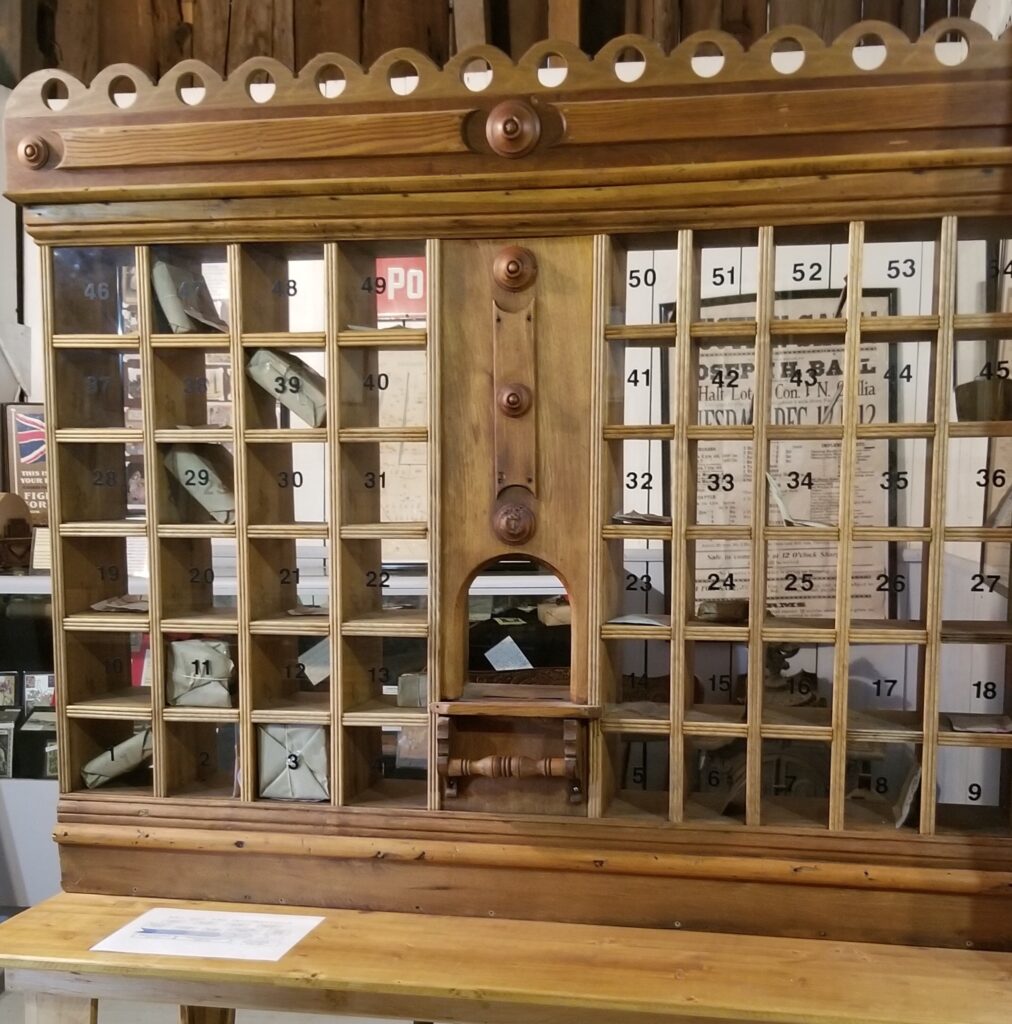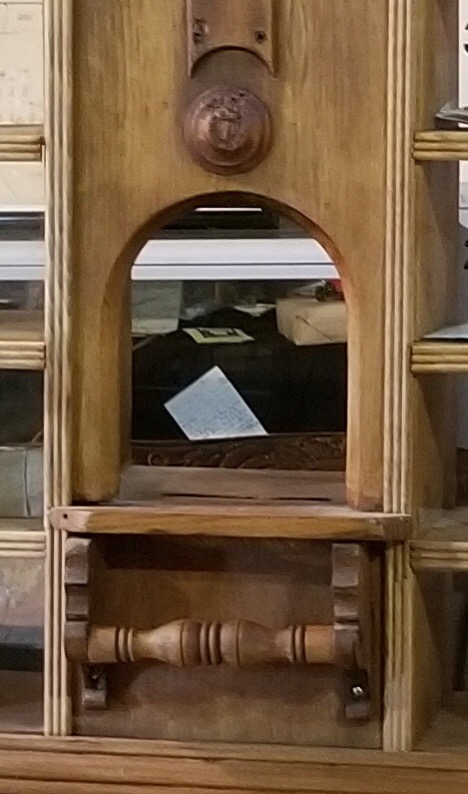The Schoolhouse Series – Part 1 – By Patricia Turnour
To view the original article and others in the 2022 series visit the Cottage Shack online magazine
As curator of the Coldwater Canadiana Heritage Museum (CCHM), I have many opportunities to research and restore our precious artifacts. I wholeheartedly thank everyone for thinking of us as the forever home for their treasures.
As we begin a new year, I would also like to share my appreciation for our wonderful volunteers. We are like a colourful quilt made up of a patchwork of friendly, talented, caring people.
Being curator does keep me busy, but I still manage to find time for my other occupation, schoolmistress. Having being a schoolteacher for almost 40 years puts me in good stead for this position.
We have a unique schoolhouse attached at one end of our display barn. Not that long ago, it had a gravel floor, gaping holes beneath the wall boards, a leaky roof and sagging rafters. The room was also shared with an abundance of wildlife.birds nesting in the corners of the ceiling were a common site. Bats also enjoyed hanging from the rafters.
However, things were about to change. We began with minor repairs to the schoolhouse walls. It took the vision of our A-Team to really get things going. After much blood, sweat and tears (literally) the current “school” emerged (perhaps the subject of a future article about the A-Team).
Today the school house proudly boasts a shiny new metal roof and a display wall for maps and pictures. It houses a well-loved collection, from times long past, of local pictures, textbooks, story books and memorabilia. Perhaps our family name is inside one of the covers. Our oldest book is entitled The Plays of William Shakespeare (1811).
And here my story begins.
Our previous school teacher was “Miss Grace” Willmott. She is fondly remembered by many young visitors whom she put through the paces of a typical pioneer school day. “Miss Lorraine” Garside often served at her side as her educational assistant. These lovely ladies still do help in the schoolhouse on special days and tours.
Today, though, it is I, Miss Patti who now takes centre stage as schoolmistress. In yesteryear my day would have started long before the arrival of the schoolchildren. Lighting the wood stove, pumping water from the well, preparing the lamps and ensuring that lessons have been planned for all eight grades, just to name a few!
When visitor children come to our school, I explain that we are imagining attending school in the village of Eady in the 1800s in the original Eady SS #14. Our records indicate it was built in 1879. Mr. Alpine was the first teacher whose wages were $360 per year. Some of the original teachers were Dan Coffey (1907), Miss Amy Weaver (1916) and Miss Alma Walker (1922). Unfortunately, that school burned down in March 1925, so classes were temporarily kept up at the Thompson house. A new brick school was soon constructed and remained in service until 1963. Eventually, it evolved into a private home.
Most of the children attending school back in those earlier times would have come from farm families and with a great distance to walk. My mother attended a one room country school and I have certainly heard just how far and how deep the snow really was.
Visiting children are also given a quick course on “School Rules.” The students take turns reading the Rules chart aloud. There are many sources online for this information.
Children must:
- Obey your school master and accept his punishments
- Help and love each other
- Refrain from fighting and teasing
- Be silent during lessons and speak only when spoken to
- Not leave your seat without permission
- Raise your hand and stand to speak
- Always write with your right hand
- Remember cleanliness is next to godliness
- Stand when an adult enters the room
After reading these rules, the children do look a little worried about the consequences of misbehaving. On this note, I do have a few tricks up my sleeve. One such punishment is the infamous dunce chair. Once seated there. A pointed hat is placed on the naughty child’s head. He/she is stuck there until the teacher has determined that he/she has learned his/her lesson. There is never a dearth of eager students willing to demonstrate this.
Another punishment involves me putting three dots on the chalkboard placed about a foot apart and directing the miscreant to put a finger of the right hand on the right dot, a finger of the left hand on the left dot and their nose on the middle dot. Again, no lack of volunteers (even the parents join in). I am certain that the consequences of misbehaving in the early days were a little more severe! Spare the rod, spoil the child comes to mind!
And so, our school day begins; and that is the subject of my next article, “Teacher, Teacher Can You Teach Me,” part 2 in this series.
In conclusion, I would just like to thank the many visitors who have walked down memory lane with me and shared their schoolhouse experiences. Being born and raised in the city, I did not have the opportunity to attend such an inspirational place. We truly appreciate your memories and musings.

